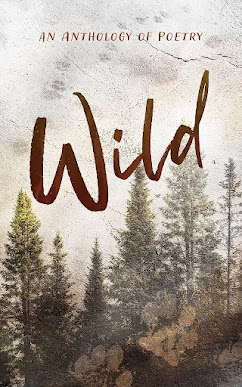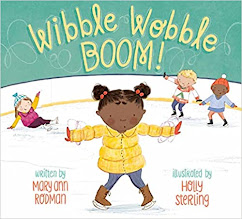Happy (early) Internet Day.
My husband and I are former drama majors, who met in community theater.
What does this have to do with the Internet? Patience, please!
We are huge movie fans. Pre-child, we would see three or four movies a week. Post-child and Pre-Netflix, we were Blockbusters' best customers. Watching movies is not a passive experience for us. We discuss the direction, the acting, the anachronisms that pop up. (The average upperclass American 1950's wife did NOT have pierced ears!)
For years our biggest argument was over a line in
The Godfather. Did Tom Hagen say to Michael Corleone, "You know Pop worked hard to get you a deferment" or "You know Pop worked hard to get you into Furman"? (A small Baptist college in South Carolina...my husband is a South Carolinian.) It didn't matter that the book said Michael went to Dartmouth.
"They changed it for the movie," my husband insisted.
 |
| This guy went to Dartmouth. |
Enter the Internet! I first met "the 'Net" when I was a university reference librarian in the mid-90's. I learned that the right combo of search terms on the right search engine (my favorite was Alta Vista) would get me any information my heart desired.
The Godfather screenplay was online. Yes, Don Corleone got Michael a
deferment, not into
Furman.
Having settled the matter of Michael Corleone's alma mater, my husband and I continue to "discuss" movies and actors. Thanks to a wonderful database,
www.IMDb.com, our differences in opinion are settled before the first commercial.
"Oh there's what's-her-name. You know her; she was the Lucky Hat Girl in
Goodfellas?"
Tap tap tap. "Welker White. She does a lot of
Law and Order."
"Didn't we see
Goodfellas when we were dating?"
"Nope. We were living in Wisconsin."
Tap tap tap. "We're both wrong.
Goodfellas came out September 1990. We were living Alabama."

What does all this have to with writing? The Internet, used with caution, saves a boatload of research time. I wrote the first version of
Jimmy's Stars in 1984. I spent months in the microfilm room of the Pittsburgh Carnegie Library reading old newspapers, making hundreds of pages of notes. After I finished the book, I sensed it was missing something. (A plot! A conflict!) So,
Jimmy lived in my bottom desk drawer for nearly 30 years. (Never throw anything out. Especially something you have researched so long!) When I re-wrote the book (this time with a plot and conflict), I could re-verify my information from my home office with just a couple of hours of online searching.
In the past, I would begin a writing project by collecting information. Pictures, maps, books and bits of ephemera picked up here and there (ration books, streetcar schedules, old postcards.) My tiny office looked like an episode of
Hoarders. Now my pre-writing prep consists of a list of questions and items in an notebook. 99% of what I need, I can find and use online. The other 1% comes from my collection of diaries, family letters and photo albums. (OK, there is a still a corner of my office that looks like
Hoarders.)
Fairy tales can come true, if you are a reference librarian! No more juggling enormous reference books. No more waiting for the new edition of that reference book to come out. Instant reference gratification! Almost everything you could ever want to know is online, somewhere.
Along with the good stuff, comes the wrong, the bad and the half-truths (to say nothing about the wonderful world of Photoshopped pictures). It's the Wild Wild Cyberspace out there. Anyone can publish
anything online, and it doesn't have to be the truth. I am reminded of students from my first school library job, circa 1982. Do you remember the old Sprite commercials, that showed a "limon--half lemon, half lime"? I could not convince otherwise intelligent kids that a limon was not a real fruit because...
they saw it on TV!
 |
| A limon is a mythical fruit. |
Just because it's online, doesn't make it true.
 |
| There is no such thing as a jackalope, either! |
The Internet is an endless source of information
and misinformation. Some sites may or may not have accurate information (Wikipedia) that has to be verified another way. I found "satirical" news sites, such as
The Onion, masquerading as legitimate information sources. If it's too weird to be true, I either search the name of the original source (which will tell me if the site is "satirical" or affiliated with a particular political agenda) or I hit
www.snopes.com. Snopes keeps up with latest rumors, urban legends and conspiracy theories.
Some people avoid writing by playing Solitaire or Candy Crush online. Me? I can spend hours happily toggling from one site to another, answering for own curiosity (and not story research) question after question. And then double checking those answers.
As the old Russian proverb (which was swiped by President Reagan's speechwriter) says, "Trust but verify." If you don't verify on the front end, some editor is going to ask you to do it eventually.
Now, I am taking a break from blog writing to scroll through my new obsession,
www.murderpedia.org, a data base of murderers, living and dead, from around the world.
Don't ask, OK?
Happy Internet Day on the 29th, y'all
Posted by Mary Ann Rodman
 Take my brand-new Dell Inspiron laptop—please. I bought it during a back-to-school sale and used it just long enough to invest in and install some new software, create a couple of conference presentations, and transfer a few files. Last weekend, the entire left half of the keyboard went dead.
Take my brand-new Dell Inspiron laptop—please. I bought it during a back-to-school sale and used it just long enough to invest in and install some new software, create a couple of conference presentations, and transfer a few files. Last weekend, the entire left half of the keyboard went dead.




































